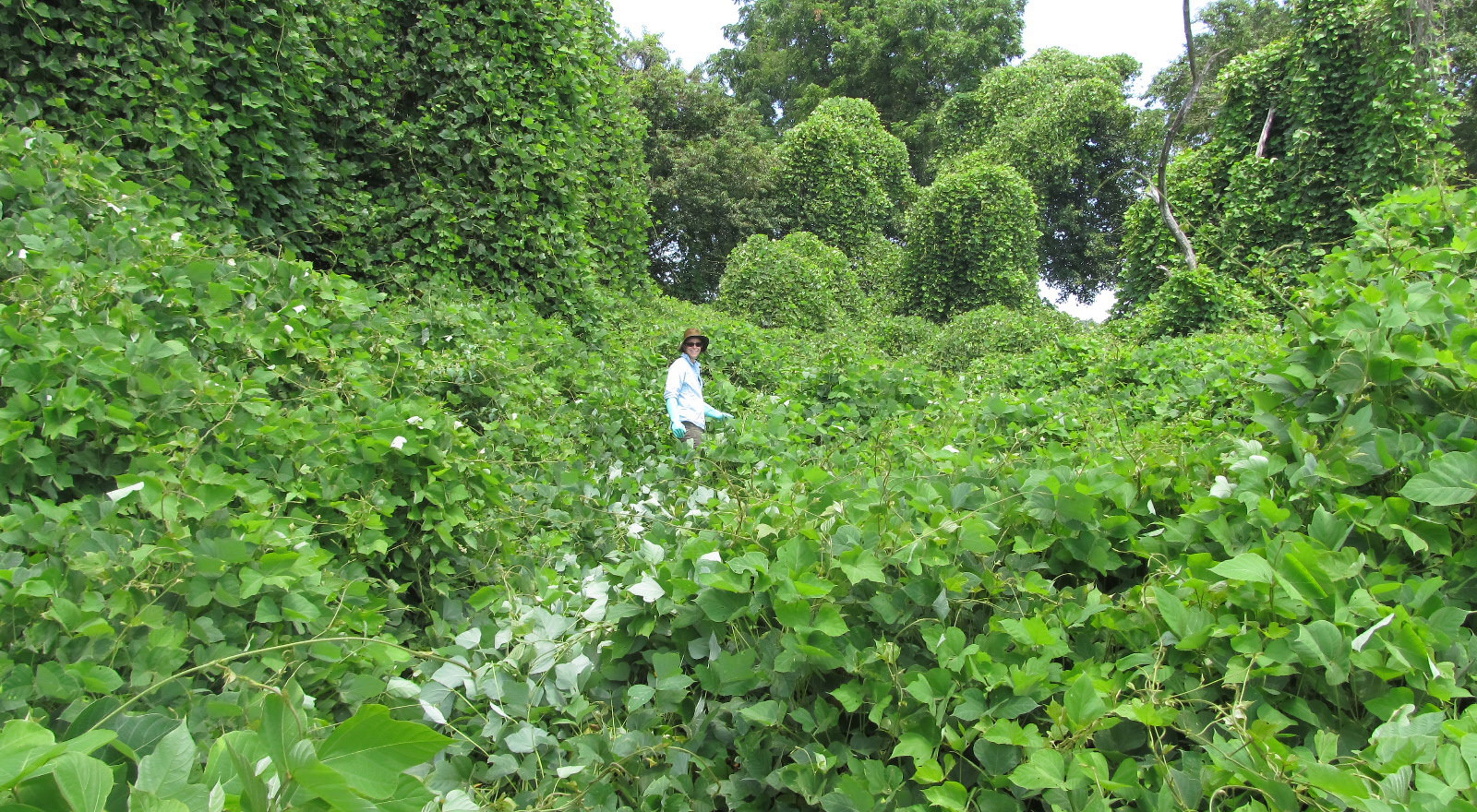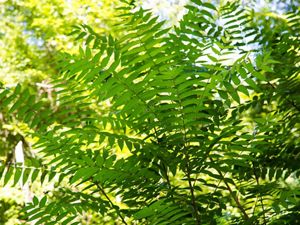Kudzu: The Invasive Vine that Ate the South
Kudzu looks innocent enough yet the invasive plant easily overtakes trees, abandoned homes and telephone poles.
Kudzu Fast Facts
Scientific name: Pueraria montana
Introduction: Brought to U.S. in 1876 as ornamental, spread from 1930s–1950s for erosion control
Pace of growth: Up to a foot per day
Identification: Semi-woody vine with alternating leaves made of three oval-shaped or lobed leaflets. After 3 years, produces purple or red flowers
Edible? Yes. Kudzu leaves, flowers and roots can be eaten. The root should be cooked.
What is Kudzu?
Known as “mile-a-minute” and “the vine that ate the South,” this creeping, climbing perennial vine terrorizes native plants all over the southeastern United States and is making its way into the Midwest, Northeast and even Oregon.
Kudzu—or kuzu (クズ)—is native to Japan and southeast China. It was first introduced to the United States during the Philadelphia Centennial Exposition in 1876 where it was touted as a great ornamental plant for its sweet-smelling blooms and sturdy vines.
From the 1930s through the 1950s, the Soil Conservation Service promoted it as a great tool for soil erosion control and was planted in abundance throughout the south. Little did we know that kudzu is quite a killer, overtaking and growing over anything in its path.
Kudzu grows out of control quickly, spreading through runners (stems that root at the tip when in contact with moist soil), rhizomes and by vines that root at the nodes to form new plants.
Once established, kudzu grows at a rate of one foot per day with mature vines as long as 100 feet.
Let Nature Take Root in Your Inbox
Get the latest news, photos and opportunities near you, delivered monthly. Check out a sample Nature News email
What Problems are Caused by Kudzu?
An invasive plant as fast-growing as kudzu outcompetes everything from native grasses to fully mature trees by shading them from the sunlight they need to photosynthesize.
This loss of native plants harms other plants, insects and animals that adapted alongside them, leading to cascading effects throughout an ecosystem.
Over time, these effects of habitat loss can lead to species extinctions and a loss of overall biodiversity.
Could Climate Change Make Kudzu Worse?
Climate change puts a lot of stress on native species. Invasive species like kudzu are often more flexible and adaptable to change than many native plants and can outcompete them early in the growing season.
Got Questions About Climate Change?
Our scientists have answers to some of your most frequently asked questions.
Climate FAQKudzu thrives in areas with mild winters and hot summers. Climate change may be making it easier for creeping vine to spread, as winters in many areas of the U.S. become milder.
Climate change also can lead to more regional drought, an opportunity for this versatile killer. Kudzu is able to weather dry periods with its deep root systems and then take over where native plants could not survive.
How to Get Rid of Kudzu
It depends how large the patch is. Newer, smaller patches can be controlled with persistent weeding. According to Purdue University, continuous mowing and grazing—both cattle and goats will eat kudzu—will weaken and eventually control the plant.
For larger growths, the vines should be cut near the ground and then carefully treated with one of a variety of herbicides. Indiana's Department of Natural Resources suggests that if herbicides are used to apply in the late summer when the plants are more susceptible to transferring the chemicals into storage organs making it more effective.
The best way to deal with kudzu or other invasive plants is to prevent them from spreading. For more ways to control kudzu, check out Dr. James H. Miller's Kudzu Eradication and Management paper.




